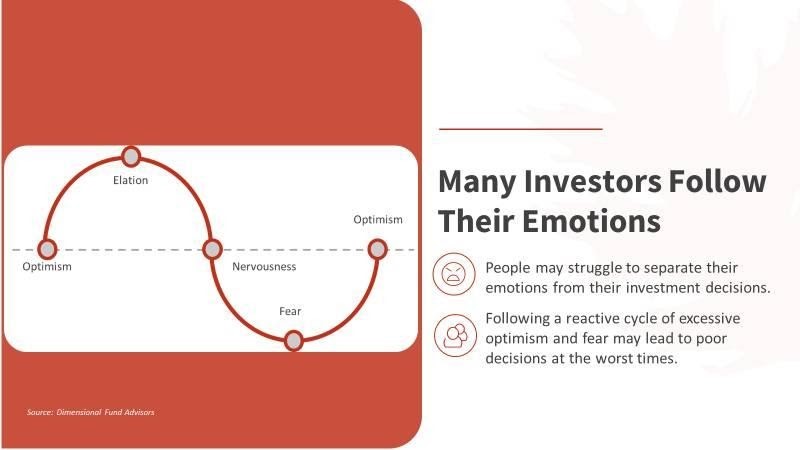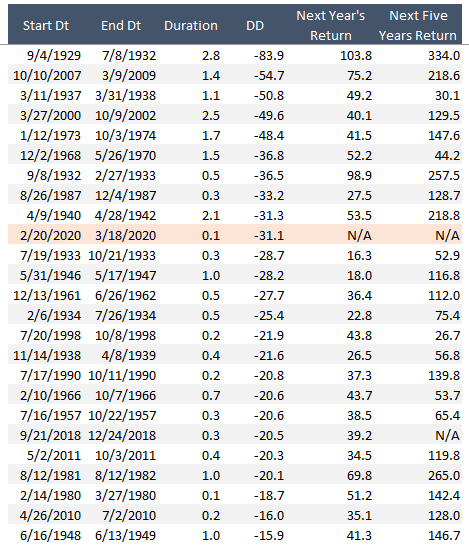So much change in a week’s time! We are sure that you are feeling what we are feeling our world has gone topsy turvy. The Covid-19 virus has disrupted everything from our physical and economic health to our mental health and our sense of security. We are reminded of a roller coaster ride: no matter how prepared we are for the sudden dips, they always catch us by surprise. What’s more, the ride always feels too fast, too steep, and too long.
Over the last three weeks, we have had the benefit of numerous conversations with our network of peers and thought leaders from throughout the financial industry. Here, we would like to summarize what our thinking and what we are doing to ride out these turbulent times.
First, it is important to recognize that as we are experiencing the worst of the Coronavirus playing out, we will go through a range of difficult emotions such as fear, anger, sadness, anxiety, to name a few. When humans encounter danger, our survival brain takes over and triggers a “fight or flight” response, while our executive brain which is in charge of rational, long-term thinking takes a backseat. This is precisely why when the markets go down dramatically, many investors want to get out.

Financial markets are the result of collective investor judgment, at any given time, reflecting collective confidence in both the future earnings of public companies and in the expected solvency of lenders. As such, markets are always forward-looking and respond much faster than economic cycles. Therefore, market rebounds usually occur well before the worst of the economic recession plays out. This is precisely why it is difficult to predict and time the market movements.
Second, we are in uncharted territory. The aggressive measures governments take to flatten the pandemic curve and save lives are unprecedented and are having a profound, negative impact on the economy. We don’t expect a quick recovery, but because this is a disease-caused economic downturn (rather than a financial system-caused one as in 2008), we are also optimistic that the economy will turn around within a reasonable amount of time. We’ve seen some encouraging developments:
- A few countries have already successfully contained the virus within a two-month period.
- The heightened global coordination and scientific research in antivirals and vaccines will increase survival rates.
- The Federal Reserve has cut interest rates to zero and launched a new round of Quantitative Easing to inject liquidity to stabilize the financial system.
- A fiscal package will be implemented to support affected businesses and workers. We hope this will lower the business default risks and unemployment rate and help stabilize the economy.
- The oil price drop will have long-term benefits on the global economy and keep inflation at bay.
Last week we shared a chart about historical Bear versus Bull markets. This time let’s examine in more detail the historical Bear markets to get a sense of what to expect if we move into a cyclical Bear market.
Below is a chart that shows the worst Bear markets we’ve experienced, their duration’s in years, and how far down the S&P total market index dropped (“DD”). Look at the following one-year and cumulative five-year returns (keep in mind that if you have a balanced, diversified portfolio, then the degree of ups and downs are much more moderate):

The bottom line is that after a major correction like this, the upside potential should be higher than the downside risk. This applies to a well-diversified portfolio as it does to the S&P, and this represents an opportunity for investors with a long-term horizon.
As frustrating as it may be to just hold steady and not react, there is simply no proven alternative way to consistently profit from timing the market. Yes, you can create a different kind of certainty by retreating to the sidelines, but deciding when and how much to invest to get back in is equally stressful and usually unprofitable. Those of us who have experienced major downturns (Tech Bubble, Great Recession, and 2018 Q4 correction) remember how unexpected they were, how even experts were caught by surprise, and then how rapidly things turned around. Consequently, many investors who bailed out of the market missed the best recovery days and hurt their long-term performance.
The surest way to protect your financial security is to understand your risk capacity (determined by your financial plan) and to make sure your risk exposure is aligned with it. This is what we do for all clients in the process of developing financial plans.
Lastly, we would like to leave you with this timely quote:
“While the interests of business are served by the aphorism “Don’t just stand there. Do something!” the interests of investors are served by an approach that is its diametrical opposite: “Don’t do something. Just stand there!”
Jack Bogle, founder of The Vanguard Group
“Standing there” doesn’t mean to do nothing. But it does mean using discipline and intelligence to find our way in emotion-filled, confusing times.
